2521ss11 Stove Replacement Instrument
Generic Clearance for Citizen Science and Crowdsourcing Projects (New)
2521ss11 Stove Replacement Instruments
Impact of Heating Stove Replacement on Indoor and Outdoor Pollutants and Respiratory Health in Shiprock, NM, Navajo Nation
OMB: 2080-0083
NAME OF INSTRUMENT/TOOL/PROCEDURE |
PURPOSE (I.E. WHAT DATA IS BEING COLLECTED? |
PAGE |
Childhood Asthma Control Test (C-ACT) |
Asthma control level for children (4-11 yrs) |
2 |
Asthma Control Test (ACT) |
Asthma control level (> 12 yrs) |
3 |
COPD Assessment Test (CAT) |
Impact of COPD (Chronic Obstructive Pulmonary Disorder) |
4 |
General Household Survey 1 |
Household conditions that may confound study findings (i.e. other sources of pollutants) and study members with COPD or asthma. Used during first visit (pre-changeout) |
5-9 |
General Household Survey 2 |
Shortened version of Survey 1 for second assessment period (post-changeout) |
10-13 |
Activity Log Form |
Time of activities in the home that may increase pollution levels – such as cooking or stoking the stove. |
14-15 |
Consent/Assent Forms Consent Parental Permission Assent
|
Obtain consent and assent to participate in research
|
16-24 16-20 21-23 24 |
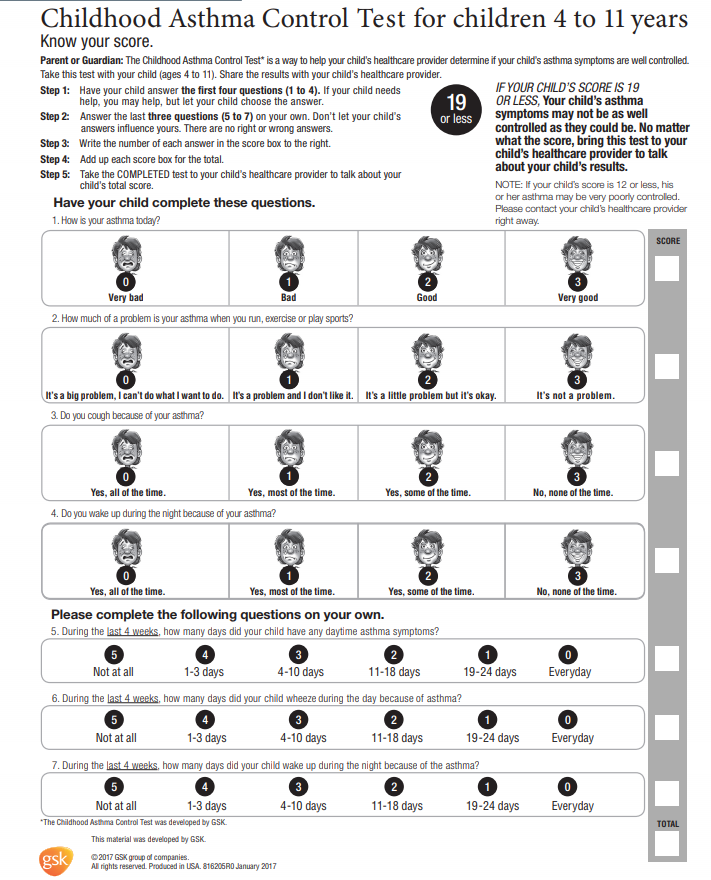
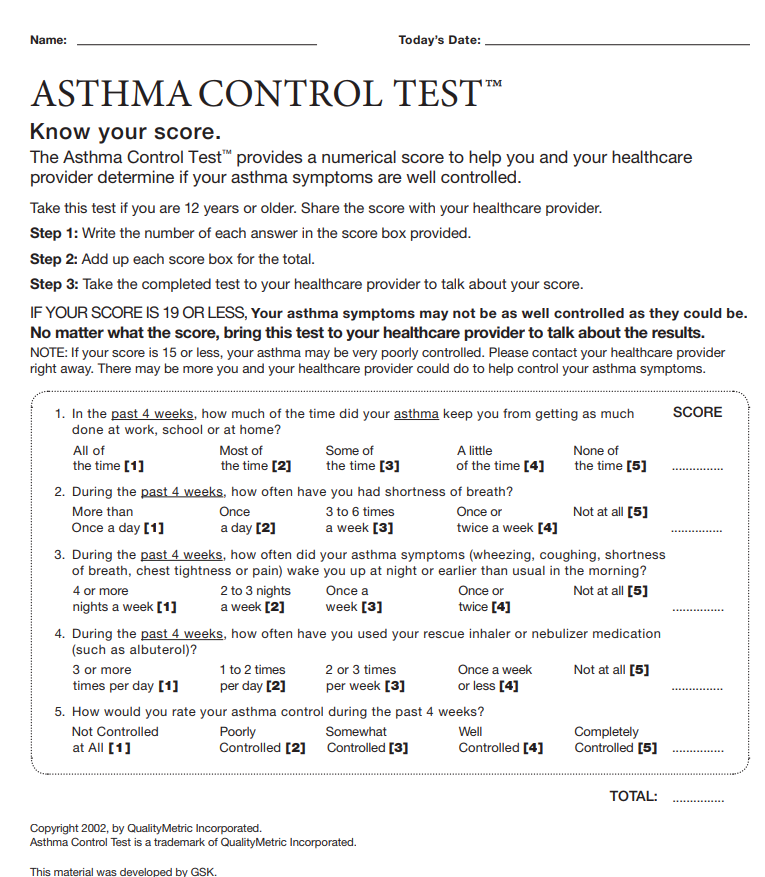
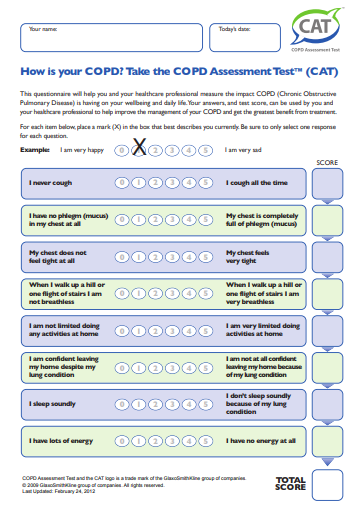
GENERAL HOUSEHOLD SURVEY 1 – Visit 1
Adapted from: ANTHC Health Homes Study – Rural Alaska Home Assessment Survey;
Navajo Nation EPA Indoor Air Quality Checklist and the University of Montana Elders Air Study.
HOME IDENTIFIER: |
DATE: |
||||||||
HOME GIS COORDINATES: Lat. = Long.= |
|||||||||
ASSESSMENT PERFORMED BY: |
ASSISTED BY (Resident initials): |
||||||||
1. GENERAL HOME INFORMATION |
|||||||||
HOME Diagram (include number for each room)
C = common room K = kitchen B = bathroom S = sleeping area/bedroom WS = woodstove |
|||||||||
*General Observations About Structure/Condition:
|
|||||||||
*Is the home weatherized? Y N *Are there holes or missing windows? Y N *A noticeable draft? Y N *Is the roof intact? Y N |
Ventilation System in kitchen? Y N |
||||||||
Is there visible mold? Y N If yes, indicate room #s: |
|||||||||
Is there noticeable mildew odor? Y N If yes, indicate room #s: |
|||||||||
Are cigarettes, ashtrays, or tobacco smoke noticeably present? Y N |
Is there evidence of candles, incense, kerosene, or traditional or other burning being used? Y N |
Is there noticeable wood or coal smoke smell in the house, or signs of smoke such as blackened walls, floors, or dripping creosote? Y N |
|||||||
*Structure type (circle): Stick Mobile Modular Masonry Steel Frame Other: ____________ |
|||||||||
HOME IDENTIFIER: |
|||||||||
2. GENERAL OCCUPANT INFORMATION |
|||||||||
Total Number of Occupants |
Number of Occupants ≤18y |
Number of Occupants ≥62 years old |
**Is someone home during the day most days? (circle) |
Has anyone in the house been diagnosed with Asthma or COPD? (circle)
|
|||||
|
|
|
Y N |
Y N |
|||||
3. INFORMATION ON OCCUPANTS WITH ASTHMA OR COPD |
|||||||||
ID # |
Name – Initials Only |
Age
|
In the last 4 weeks, were they home during the day most days? |
Room # where occupant sleeps
|
Diagnosed with Asthma or COPD? (circle) |
Lived in house less than 1 month? |
|||
1 |
|
|
Y N |
Rm # ___ |
Asthma COPD |
Y N |
|||
2 |
|
|
Y N |
Rm # ___ |
Asthma COPD |
Y N |
|||
3 |
|
|
Y N |
Rm # ___ |
Asthma COPD |
Y N |
|||
4 |
|
|
Y N |
Rm # ___ |
Asthma COPD |
Y N |
|||
5 |
|
|
Y N |
Rm # ___ |
Asthma COPD |
Y N |
|||
6 |
|
|
Y N |
Rm # ___ |
Asthma COPD |
Y N |
|||
7 |
|
|
Y N |
Rm # ___ |
Asthma COPD |
Y N |
|||
4. OUTDOOR POLLUTION |
|||||||||
**Are there any ambient pollution sources that may be impacting indoor air in this home (circle)? |
dusty roads outdoor burning power plant generators farm equipment
other (list):
|
||||||||
Is primary cooking appliance in dedicated kitchen? |
Y N (if N, indicate room #): ______ |
||||||||
Fuel type(s): |
Electric Gas Wood Coal Other __________ |
||||||||
Is cooking appliance vented? |
Y N |
||||||||
Is cooking done on any other appliance in the home? |
Y N (if yes, describe): |
||||||||
General observations:
|
|||||||||
HOME IDENTIFIER: |
DATE: |
||||||||
*Primary heating appliance (circle one):
|
Wood Stove Coal Stove Pellet Stove Fireplace Fireplace Insert
Electrical Propane Natural gas furnace Oil
Other:
|
||||||||
*Secondary heating appliance (circle one):
|
Wood Stove Coal Stove Pellet Stove Fireplace Fireplace Insert
Electrical Propane Natural gas furnace Oil
Other:
|
||||||||
*Wood or Coal Stove Details: Model, Approximate age of stove, EPA certification, Condition (G = good, M = moderate, P = poor) |
Model: _________________ Age: ______ EPA Certified? Y N Condition: G M P
Model: _________________ Age: ______ EPA Certified? Y N Condition: G M P
Model: _________________ Age: ______ EPA Certified? Y N Condition: G M P
|
||||||||
Primary heat appliance: Describe venting (circle all that apply) |
Missing Intact Moderately Damaged Badly Damaged Sharp bends
Describe damage: __________________________________________________________
|
||||||||
Does the vent go out through the roof, window, or wall? |
None Roof Window Wall Other: _______________________________ |
||||||||
Secondary heat appliance: Describe venting (circle all that apply) |
Missing Intact Moderately Damaged Badly Damaged Sharp bends
Describe damage: __________________________________________________________
|
||||||||
Does the vent go out through the roof, window, or wall? |
None Roof Window Wall Other: _______________________________ |
||||||||
When was the chimney last swept? |
Past 6 months 6 months – 1 year 1-2 years >2 years |
||||||||
Approximately how tall is the chimney (height from roof)? |
<1 foot 1-3 feet >3 feet |
||||||||
General Observations:
|
|||||||||
HOME IDENTIFIER: |
DATE: |
||||||||
7. HEATING FUEL |
|||||||||
**Where do you usually get your wood? |
Harvest myself Roadside Vendor Store Delivery Program |
||||||||
How do you usually store your wood/coal (circle all that apply) |
Outside: Fully Covered Partially Covered Uncovered
Inside: On top of stove Next to Stove Other: ______________________ |
||||||||
On average, how many cords of wood do you burn each year? (refer to cord estimation chart) |
1 2 3 4 5 6 7 8 9 >9 |
||||||||
On average, how much coal do you burn each year? |
_______ bags _______ full-size pickup truck loads ______ compact size pickup truck loads |
||||||||
On average, how many pieces of wood do you use per day in winter? |
0-5 5-10 10-15 15-20 20-25 25-30 >30 |
||||||||
On average, how many pieces of coal do you use per day in winter? |
0 1-3 4-6 7-10 11-15 >15 |
||||||||
On average, what size coal piece do you burn? (refer to weight estimation sheet) |
1-4 lb 5-9lb >10lb |
||||||||
Are air filters used in the home? |
Y N
How many? ______
What Type?
Portable air cleaner (Model: _______________________________)
In HVAC system (MERV rating: _________)
Rooms (#s): ____________ _________________ ________________ _______________
|
||||||||
Other observations:
|
|||||||||
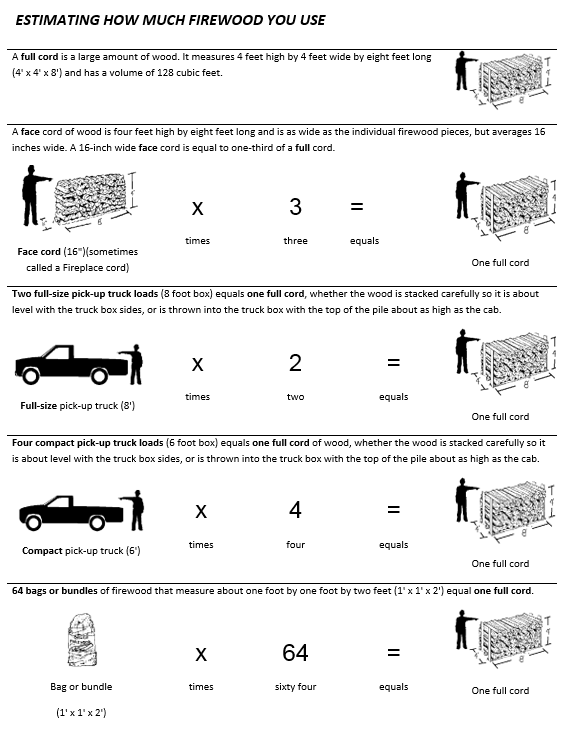
GENERAL HOUSEHOLD SURVEY 2 – Visit 3
Bring General Household Survey 1 for Reference
Adapted from: ANTHC Health Homes Study – Rural Alaska Home Assessment Survey;
Navajo Nation EPA Indoor Air Quality Checklist and the University of Montana EldersAir Study.
HOME IDENTIFIER: |
||||||||
HOME GIS COORDINATES: Lat. = Long.= |
||||||||
ASSESSMENT PERFORMED BY: |
ASSISTED BY (Resident initials): |
|||||||
1. GENERAL HOME INFORMATION |
||||||||
General Observations About Structure/Condition -- Has anything changed since the last visit? If Y, indicate:
|
||||||||
Was the home recently weatherized with the changeout? Y N Describe: |
||||||||
Is there visible mold? Y N If yes, indicate room #s: |
||||||||
Is there noticeable mildew odor? Y N If yes, indicate room #s: |
||||||||
Are cigarettes/ashtrays/ tobacco smoke noticeably present? Y N |
Is there evidence of candles, incense, kerosene, or traditional or other burning being used? Y N |
|||||||
Is there noticeable wood or coal smoke smell in the house, or signs of smoke such as blackened walls, floors, or dripping creosote? |
Y N |
|||||||
2. GENERAL OCCUPANT INFORMATION |
||||||||
Has anyone new moved into the house since our first visit? Y N |
If yes, how many people moved in? _____
What are their ages? ____; _____; _____; ____
|
|||||||
Does anyone new who moved in have asthma or COPD? (list them on following page) |
Y N |
|||||||
Of the household members with asthma or COPD on our first visit, do any no longer live here? If yes, provide their initials and age. |
Y N
Initials: ______; _______; _______; ______
Age: ______; _______; _______; ______
|
|||||||
Has anyone in the house been diagnosed with Asthma or COPD since our last visit? (list them on the following page)
|
Y N |
|||||||
HOME IDENTIFIER: |
||||||||
3. INFORMATION ON OCCUPANTS WITH ASTHMA OR COPD* |
||||||||
List only new occupants with asthma or COPD, or prior occupants with a new diagnosis |
||||||||
ID # |
Name – Initials Only |
Age
|
During the past 4 weeks, were they home during the day most days? |
Room # where occupant sleeps
|
Diagnosed with Asthma or COPD? (circle) |
Lived in house less than 1 month? |
||
1 |
|
|
Y N |
Rm # ___ |
Asthma COPD |
Y N |
||
2 |
|
|
Y N |
Rm # ___ |
Asthma COPD |
Y N |
||
3 |
|
|
Y N |
Rm # ___ |
Asthma COPD |
Y N |
||
4 |
|
|
Y N |
Rm # ___ |
Asthma COPD |
Y N |
||
4. OUTDOOR POLLUTION |
||||||||
**Are there any new ambient pollution sources that may be impacting indoor air in this home? (list) |
New sources:
|
|||||||
5. COOKING APPLIANCES |
||||||||
Has there been any change to the primary cooking appliance or fuel? (if Y indicate change) |
Y N Describe change: |
|||||||
6. HEATING APPLIANCES |
||||||||
*Which heating appliance was recently replaced? |
Old Stove Model __________________________ Old Stove Fuel(s) ________________
|
|||||||
*Which new heating appliance did you receive? |
Model: _________________ Fuel(s): ______ |
|||||||
Is your new appliance keeping you more warm, less warm, or about the same? |
More Warm Less Warm About the Same Explain: |
|||||||
Inside the house, did you notice more smoke, less smoke, or about the same amount of smoke after your stove was replaced? |
More Smoke Less Smoke About the Same Amount of Smoke Explain: |
|||||||
Overall, are you happy with the change? |
Y N I’m not sure Explain: |
|||||||
Have there been any changes to your secondary heating appliance? |
Y N Describe change: |
|||||||
HOME IDENTIFIER: |
DATE: |
|||||||
Are you using your secondary heating appliance more, less, or about the same since receiving the new appliance? |
More Less About the Same Explain: |
|||||||
Were your chimney and vents replaced too? |
Y N Describe change:
|
|||||||
General Observations:
|
||||||||
7. HEATING FUEL |
||||||||
On average, considering the weather, are you using more wood, less wood, or about the same amount of wood since before the change? |
More Wood Less Wood About the Same Explain: |
|||||||
On average, considering the weather, are you using more coal, less coal, or about the same amount of coal since before the change? |
More Coal Less Coal About the Same I don’t use coal anymore I never used coal
Explain: |
|||||||
Do you have any new filters in your home? |
Y N
How many? ______
What Type?
Portable air cleaner (Model: _______________________________)
In HVAC system (MERV rating: _________)
Rooms (#s): ____________ _________________ ________________ _______________
|
|||||||
General observations: |
||||||||
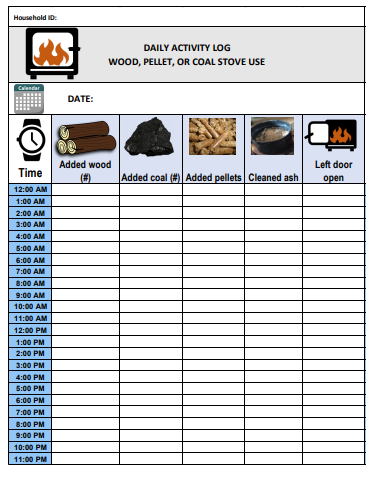
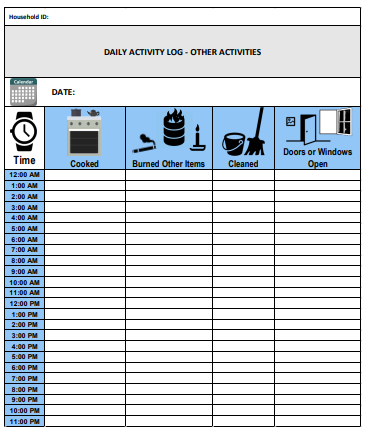
Consent to Take Part in a Human Research Study
Title of research study: Impact of heating stove replacement on indoor and outdoor pollutants and respiratory health in Shiprock NM, Navajo Nation.
IRB Protocol Numbers: (CU 17-0508; #DCIRB 17.06; NNHHRB NNR-17.292T)
Investigator:
Dr. Lupita D. Montoya
University of Colorado, Boulder
4001 Discovery Drive
607 UCB - S286A
Boulder, CO 80303
Phone: (303) 492-7137; Email: [email protected]
Sponsor: U.S. Environmental Protection Agency and the University of Colorado, Boulder.
Section I – Description of the Study
Why am I being invited to take part in a research study?
We invite you to take part in this research study because you have been selected to receive a new heating stove under a federal Clean Air Act Settlement Agreement (“settlement”). By participating in this study, you will be able to know how pollutant levels in your house change following the stove changeout and weatherization project. We will also monitor improvements in the respiratory health of members in your household who suffer from asthma or chronic obstructive pulmonary disease (COPD). If air pollution is not reduced as much as expected, this can be relayed to the stove changeout program coordinators so they can do a course correction, if needed. This knowledge can be used to improve stove choices to better match Navajo heating practices or to enhance and customize education on proper stove operation to address any issues uncovered through monitoring.
What should I know about this research study?
Someone will explain this research study to you.
Whether or not you take part is up to you.
You can choose not to take part.
You can agree to take part and later change your mind.
Your decision will not be held against you.
You can ask all the questions you want before you decide.
Why is this research being done?
A study published in 2010 found that the combustion of solid fuels for indoor heating in Navajo homes was likely associated with negative health effects in this community. They suggested that high levels of indoor pollutants could be greatly reduced by changing indoor heating behaviors and improving heating stove quality. Combustion of coal emits air pollutants that have been linked to negative health effects on people.
The purpose of this study is to examine the impact of heating stove changeouts on indoor and outdoor air quality as well as on respiratory symptoms in Navajo residences in Shiprock, NM, Navajo Nation.
Participating in this research study can be beneficial to you because we will provide you with feedback on pollution levels and how to reduce emissions from the new stoves. This information can help further improve indoor and outdoor air quality and health. It should also result in more efficient stove use, requiring less fuel to keep the home warm, and saving valuable natural and financial resources.
How long will the research last?
We expect that this research study will take place over five years; however, your participation will be for one to two heating seasons, depending on what time of year your stove is replaced. You will have the option to allow the research team to return and monitor your health with quick questionnaires and/or to do additional air quality sampling in subsequent heating seasons to gain further insight into the performance of the new stoves. This will enable you and the researchers to better understand the impacts of reduced stove emissions on health as well as potentially improve upon the efficiency of the stoves. Initial measurements will begin in Winter 2017/2018 (December through April); the study is expected to end in Winter 2022/2023.
How many people will be studied?
We expect to enroll up to 200 responsible adults, heads of households, in this study. For the Pilot Phase, the first year, we expected 9 people receiving wood/coal combo stoves to participate. In the subsequent 4 years, we expect a maximum of 50 heads of households to participate, for a total of 200 heads of households, maximum. At each participating household, we will try to enroll people suffering of asthma and/or COPD to complete health surveys. These people may or may not be the head of the household. We expect that at least one and at most three persons at each household will fill out the health surveys; therefore, we expect a minimum of about 200 and a maximum of about 600 people participating in the health surveys.
What happens if I say yes, I want to be in this research?
If you agree to take part in this study, the General Household Survey 1 will be administered to you or a capable adult who resides in the household, by a Navajo researcher to collect information. This survey should take approximately 30 minutes. Information about home characteristics like size, type, and heating appliances will be gathered from you. You will also be asked to fill out an Activity Log about your fuel use and cleaning activities as well as opening and closing of doors and windows in your home during the study period. If there are people in the household who suffer of asthma or COPD, we will ask those people to also complete a very short Health Questionnaire before and after the stove changeout. You are encouraged to ask the researcher any questions you might have. During this visit, the research team will also install air pollution monitoring devices inside and outside your home. The total expected time for this visit is expected to be between 60–90 minutes.
After 2–7 days, the researchers will return and retrieve the instruments as well as collect completed Activity Logs and Health Questionnaires. This second visit is expected to take 30 minutes. The third visit will occur approximately one month after your household has received the new stove. The same instruments from the first visit will be installed again and new Activity Logs will be distributed. The research team will complete a shorter General Household Survey 2 and distribute applicable Health Questionnaires. This visit will take between 45–60 minutes. The fourth, and last, visit will be 2–7 days after the third visit and the research team will collect completed Activity Logs and Health Questionnaires as well as retrieve the monitoring devices. The final visit is estimated to take 30 minutes.
Results will be communicated to you the spring following the second air quality monitoring period (post changeout). All data will be coded to remove identifiers and the key will be safely kept with the Primary Investigator (PI). You will be contacted by the research team in person or through email/phone to inform you of the results of the research.
Section II – Risks and benefits to the participant
Will being in this study help me in any way?
We cannot promise any benefits to you or others from your participation in this research study. However, possible benefits include: obtaining results on the average air pollutant concentrations present in the air inside your home, understanding the health effects related to exposure to these pollutants, and gaining knowledge on how to reduce related health problems. Participation in this research study does not affect your eligibility to receive a stove and weatherization under the Four Corners Power Plant settlement agreement; you must be eligible to receive a stove and weatherization under the settlement agreement to participate in this study. If you are eligible and apply, you may receive a stove under the settlement agreement even if you do not participate in the study.
Are there any risks to me from being in this research?
No risks to rights or welfare are expected for any group participating in the research study, aside from inconvenience, time expenditures, and small additional costs for electricity during the two, 2–7 days research study periods. Inconveniences and time expenditures include receiving phone calls from researchers to schedule visits to your home, having researchers in your home four times over the course of the study to place and retrieve monitors, filling out forms, and having air quality and temperature monitoring devices in your home for two 2-7 day periods. These monitors require electricity so there may be an additional inconvenience from these devices occupying electrical outlets in the home, as well as a slight increase in electrical usage during the study period. There will be a total of four home visits lasting between 30 minutes and 90 minutes each.
Who can I talk to?
If you have any concerns about the risks or benefits of participating in this study, or if you think the research has hurt you, you can contact the study investigators or the IRB office at the phone numbers or emails indicated below:
Navajo Department of Health Institutional Review Board:
Beverly Becenti-Pigman, Board Chair, Navajo IRB Office
P.O. Box 1390, Window Rock, AZ 86515
(928) 871-6929 or [email protected]
Navajo Nation Environmental Protection Agency:
Michael King
Address: Navajo Nation EPA in Shiprock NM (located by Veterinary Clinic)
Phone: (505) 368-1046
Email: [email protected]
University of Colorado Boulder:
Lupita D. Montoya
Address: 4001 Discovery Drive
607 UCB - S286A
Boulder, CO 80303
Phone: (303) 492-7137
Email: [email protected]
This research study has been reviewed and approved by Institutional Review Boards (“IRBs”) at the University of Colorado, Boulder; Diné College; and the Navajo Department of Health. You may contact these institutional review boards if:
Your questions, concerns, or complaints are not being answered by the research team.
You cannot reach the research team.
You want to talk to someone besides the research team.
You have questions about your rights as a research subject.
You want to get information or provide input about this research.
Navajo Department of Health Institutional Review Board:
Beverly Becenti-Pigman, Board Chair, Navajo IRB Office
P.O. Box 1390, Window Rock, AZ 86515
(928) 871-6929 or [email protected]
University of Colorado, Boulder Institutional Review Board:
(303) 735-3702 or [email protected]
Diné College Institutional Review Board:
(928)
724-6624 or [email protected]
Section III – Costs and payments to the participant
Will being in this study cost me money?
You may experience a slight increase in electricity costs for the two 2-7 day study periods in which air quality monitors are plugged into your electrical outlet.
Will I be compensated for my participation?
You will not be compensated for your participation in this study.
Section IV – Confidentiality
What happens to the information collected for the research?
All information obtained is strictly confidential unless disclosure is required by law. We cannot promise complete secrecy. We will limit the use and disclosure of your personal information to people who have a need to review this information, like our research team. Organizations that may inspect and copy your information include the IRB and other representatives of this organization.
How will you protect my privacy?
All information collected in the household will have participant identification information removed and the data will be coded. The general surveys for the households will be coded to keep the identity of the volunteer secret. That information is contained in the first page of the survey, which will be removed and only the Principle Investigator will have access to. The use of this information will only take place under the Principle Investigator’s approval and coordination. Health surveys will also be coded. Data will be saved in electronic files on a password-protected computer. Coded identification information will be saved in a separate secure location. Computers used to store data have the latest anti-virus, security updates installed and reside on networks that have appropriate security controls in-place (firewalls, monitoring, logging). Data of this type will be accessed through authenticated mediums on a need to know basis. Only approved electronic mediums and services; emails, file shares, etc. will be used to transmit and store data. Information may be stored in approved cloud servers. Coded list will be destroyed five years after the completion of the project.
Section V – Participant’s right to withdraw from the study
You must understand that you are free to refuse to participate in or withdraw from the study at any time without adverse effects or loss of benefits, and that, if you withdraw, the data will be destroyed.
What happens if I do not want to be in this research?
You can leave the research study at any time, and it will not be held against you. Participation in the research study does not affect your eligibility to receive a new stove and weatherization under the Four Corners Power Plant Settlement Agreement. If you are a student at Diné College, participation in the research study will not affect your grades, assessments, or schooling, including if you choose not to participate or if you choose to leave the study.
What happens if I say yes, but I change my mind later?
You can leave the research study at any time, and it will not be held against you. You may also request that any data already collected be destroyed at any time.
Section VI – Voluntary consent by the participant
I have read this consent form (or it has been read to me) and I fully understand the contents of this document and voluntarily consent to participate. All of my questions concerning this research have been fully answered. If I have any questions in the future about this study they will be answered by the investigator listed above or his/her staff. A copy of this form has been given to me.
Signature Block for Capable Adult
Your signature documents your permission to take part in this research.
|
||
|
|
|
Signature of subject |
|
Date |
|
|
|
Printed name of subject |
||
|
|
|
Signature of person obtaining consent |
|
Date |
|
|
|
Printed name of person obtaining consent |
|
IRB Approval Date |
[Use the following block if a witness will observe the consent process. E.g., short form of consent documentation or illiterate subjects.]
My signature below documents that the information in the consent document and any other written information was accurately explained to, and apparently understood by, the subject, and that consent was freely given by the subject.
|
||
|
|
|
Signature of witness to consent process |
|
Date |
|
|
|
Printed name of person witnessing consent process |
||
Section VII – Other Considerations
Study investigators will inform you if significant new information relating to the study becomes available which may relate to your willingness to continue to participate in this research study.
UNIVERSITY OF COLORADO BOULDER
PARENTAL PERMISSION FORM FOR CHILD’S RESEARCH PARTICIPATION
Study Title: Impact of heating stove replacement on indoor and outdoor pollutants and respiratory health in Shiprock NM, Navajo Nation.
Principal Investigator: Dr. Lupita D. Montoya
IRB Study Number: Protocol CU 17-0508; #DCIRB 17.06; NNHHRB NNR-17.292T
Your child is being asked to take part in a research study. This form has important information about the reason for doing this study, what we will ask your child to do, and the way we would like to use information about your child if you choose to allow your child to be in the study.
Why are you doing this study?
Your child is being asked to participate in a research study seeking to understand why children at the Navajo Nation have asthma.
The purpose of the study is to determine whether smoke from wood or coal may worsen asthma symptoms. In order to do that, we will ask your child to answer a questionnaire with your help. We will also monitor the air inside and outside your home.
What will my child be asked to do if my child is in this study?
Depending on your child’s age, they will be asked to fill out a short questionnaire called the Childhood Asthma Control Test (C-ACT) or the Asthma Control Test (ACT). Children between the ages of 4 and 11 will be given the C-ACT, which contains four questions for your child and three questions for you, the parent. Children between the ages of 12 and 17 will be given the Asthma Control Test, which is the questionnaire that adults with asthma also fill out. Your child will write their assigned number and age on the questionnaire. No further identifying information will be requested. Both the C-ACT and ACT are expected to take between 5 and 10 minutes to complete.
What are the possible risks or discomforts to my child?
Your child’s participation in this study does not involve any physical or emotional risk to your child beyond that of everyday life.
As with all research, there is a chance that confidentiality of the information we collect about your child could be breached – we will take steps to minimize this risk, as discussed in more detail below in this form.
What are the possible benefits for my child or others?
Taking part in this research study may not benefit your child personally, but possible benefits to the household include: obtaining results on the average air pollutant concentrations present in the air inside your home, understanding the health effects related to exposure to these pollutants, and gaining knowledge on how to reduce related health problems.
How will you protect the information you collect about my child, and how will that information be shared?
We will limit the use and disclosure of your personal information to people who have a need to review this information, like our research team. We cannot promise complete secrecy. Organizations that may inspect and copy your information include the IRB and other representatives of this organization.
The results of this study may be used in publications and presentations; however, no identifying information will be shared. All information collected in the household will have participant identification information removed and the data will be coded. The general surveys for the households will be codified to keep the identity of the volunteer secret. That information is contained in the first page of the survey, which will be removed and only the PI will have access to. The use of this information will only take place under the PI’s approval and coordination. The surveys for the respiratory disease sufferers (C-ACT, ACT, CAT) will also be codified.
Data will be saved in electronic files on a password-protected computer and only the Principal Investigator (PI) will have access to the identification information (key) saved in a separate secure location. Computers used to store data have the latest anti-virus, security updates installed and reside on networks that have appropriate security controls in-place (firewalls, monitoring, logging). Data of this type will be accessed through authenticated mediums on a need to know basis. Only electronic media and services, emails, file shares, etc. approved by the institution will be used to transmit and store data. Information may be stored in approved cloud servers. The coded list will be destroyed five years after the completion of the project.
Financial Information
Neither you nor your child will incur additional costs from this portion of the research study. Your child will not be paid for participating in this study.
What are my child’s rights as a research participant?
Participation in this study is voluntary. Your child may withdraw from this study at any time. You and your child will not be penalized in any way or lose any sort of benefits for deciding to stop participation. If your child is a student at Diné College, their academic performance will not be affected by participating or not participating in this study.
If your child decides to withdraw from this study, the researchers will ask if the information already collected from your child can be used.
Who can I contact if I have questions or concerns about this research study?
If you or your child have any questions, you may contact the researchers at
Name: Beverly Becenti-Pigman, Board Chair, Navajo IRB Office
P.O. Box 1390, Window Rock, AZ 86515
(928) 871-6929
Email: [email protected]
Name: Lupita D. Montoya, University of Colorado Boulder
Address: 4001 Discovery Drive
607 UCB - S286A
Boulder, CO 80303
Phone: (303) 492-7137
Email: [email protected]
Name: Michael King, Navajo Nation Environmental Protection Agency
Address: Navajo Nation EPA in Shiprock NM (located by Veterinary Clinic)
Phone: (505) 368-1046
Email: [email protected]
If you have any questions about your child’s rights as a participant in this research, you can contact the following office at the University of Chicago:
University of Colorado Boulder
Social and Behavioral Research IRB
ARC
Room A15
3100 Marine Street
Boulder, Colorado 80309
(303)
735-3702
[email protected]
Parental Permission for Child’s Participation in Research
I have read this form and the research study has been explained to me. I have been given the opportunity to ask questions and my questions have been answered. If I have additional questions, I have been told whom to contact. I give permission for my child to participate in the research study described above and will receive a copy of this Parental Permission form after I sign it.
__________________________________________________________ ____________
Parent/Legal Guardian’s Name (printed) and Signature Date
__________________________________________________________ ____________
Name of Person Obtaining Parental Permission Date
Assent Form for Minor’s Participation in Research Study
University of Colorado, Boulder
Project Title: Impact of Heating Stove Replacement on Indoor and Outdoor Pollutants and Respiratory Health in Shiprock, NM, Navajo Nation.
Principal Investigator: Lupita D. Montoya, Ph.D.
_________________________________ _____________________________
Child’s Name Child’s Date of Birth
You are being asked to participate in a research study. Your participation in this study is completely voluntary. This study is trying to find out some of the reasons why children at the Navajo Nation have asthma. We are asking you to be in the study because you are a child with asthma.
The purpose of this study is to determine whether smoke from wood or coal may worsen asthma symptoms. In order to do that, we will ask you to answer a questionnaire with the help of a responsible adult. We will also monitor the air inside and outside your home.
Please ask questions about any part of this study that you do not understand. You are free to withdraw at any time. You will not be forced to do anything you do not want to do. If you decide you do not want to be a part of the study either now or later, no one will be mad or upset with you. You just have to let us know.
I have explained to ________________________________ that the purpose of this research is to study the effects of stove replacement and asthma symptoms following the narrative above.
_______________________________ _______________________
Name of Person Obtaining Consent Date
_______________________________ _______________________
Signature of Person Obtaining Consent Date
This study on stove replacement and asthma symptoms has been explained to me and all of my questions have been answered. I agree to take part in this research study.
________________________________ ________________________
Child’s Signature Date
| File Type | application/vnd.openxmlformats-officedocument.wordprocessingml.document |
| Author | Stewart, Kathleen |
| File Modified | 0000-00-00 |
| File Created | 2021-01-20 |
© 2025 OMB.report | Privacy Policy